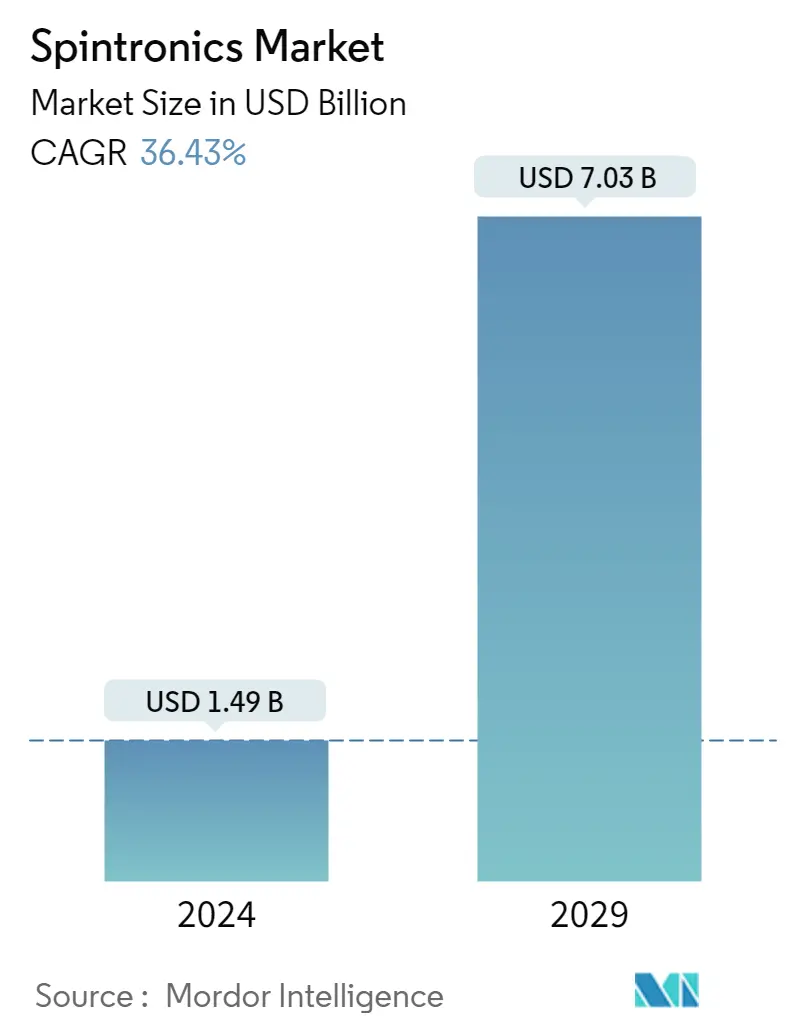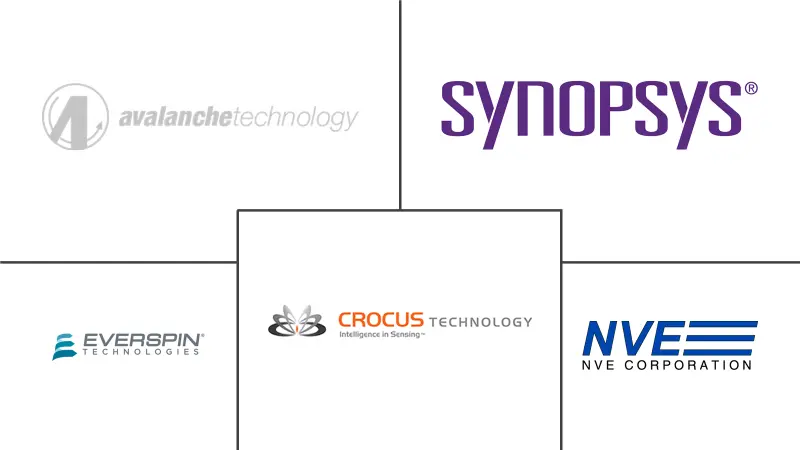Market Size of Spintronics Industry

| Study Period | 2017-2027 |
| Market Size (2023) | USD 1.09 Billion |
| Market Size (2028) | USD 5.15 Billion |
| CAGR (2023 - 2028) | 36.43 % |
| Fastest Growing Market | Asia Pacific |
| Largest Market | North America |
Major Players
*Disclaimer: Major Players sorted in no particular order |
Need a report that reflects how COVID-19 has impacted this market and its growth?
Spintronics Market Analysis
The Spintronics Market size is estimated at USD 1.09 billion in 2023, and is expected to reach USD 5.15 billion by 2028, growing at a CAGR of 36.43% during the forecast period (2023-2028).
The spintronics market is in its nascent stage, where a significant portion is still highly dependent on research and technological innovations. Moreover, the market's supply side was affected in the initial phase of COVID-19 due to nationwide lockdowns and factory closures worldwide. However, the scenario expanded the scope of the market studied as industries like data centres and cloud computing witnessed a massive surge in demand and adoption.
- The latest advances in spintronics technology are based on nanometric thin film structures with perpendicular magnetic anisotropy, in which the spin currents are utilized for producing changes in the magnetization of a magnetic layer. This effect is called spin-orbit torque (SOT), and it can be improved by engineering multilayer stacks composed of alternated magnetic or non-magnetic metals. These systems are the essential elements used for spin-orbit torque magnetization switching, utilized in the next generation of magnetoresistive random-access memory (MRAM) devices.
- For instance, the SpinOrbitronics research team guided by Dr. Paolo Perna at IMDEA Nanociencia observed the emergence of an interfacially enabled increase of the spin-orbit torque when an ultrathin Cu interlayer is inserted between Pt and Co in symmetric Pt/Co/Pt trilayer. The improvement of SOT is accompanied by a reduction of the spin-Hall magnetoresistance, showing that the spin memory loss effect in the Cu/Pt and Co/Cu interfaces is responsible for both enhanced SOT and a reduction in the spin-Hall magnetoresistance.
- In recent years, spintronics has been gaining momentum in the microelectronics market with the launch of industrial production from many significant players in the field (Samsung, INTEL, TSMC, and Global Foundries) of a new type of magnetic memory - MRAMs (Magnetic Random Access Memory). Comprehensive experimental efforts have been made to regulate electron displacement over long distances, although maintaining electron spin coherence after transfer remains challenging. Since individual electron spins can be displaced coherently over a distance of 5 µm, controlling the spin of electrons for long distances was challenging for the industry. Products integrated with spintronics technology have applications in electric vehicles, MRAM, industrial motors, and data storage, among other end users discussed within this report's scope.
- In the last few years, spintronics technology has also been extensively deployed in data storage devices due to its more active data transmission capabilities and increased storage capacities compared to conventional storage devices.
- At present, spintronic devices, for instance, magnetic tunnel junctions, suffer from limitations like low operating temperatures and severe constraints in material selection. To overcome these limitations, the market witnessed new research and development activities by organizations such as EURAMET. Practically, spintronics technology can consolidate the primary elements of magnetic storage devices and advanced semiconductor microelectronics or nanoelectronics in a single chip.
